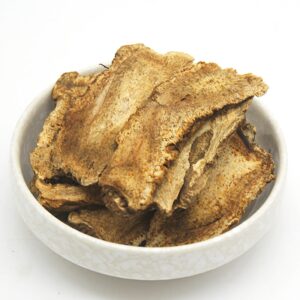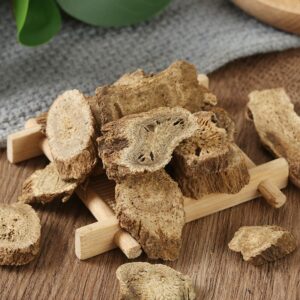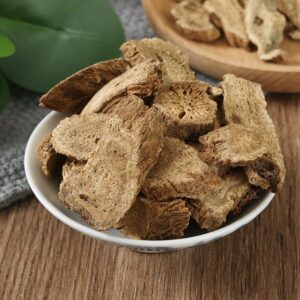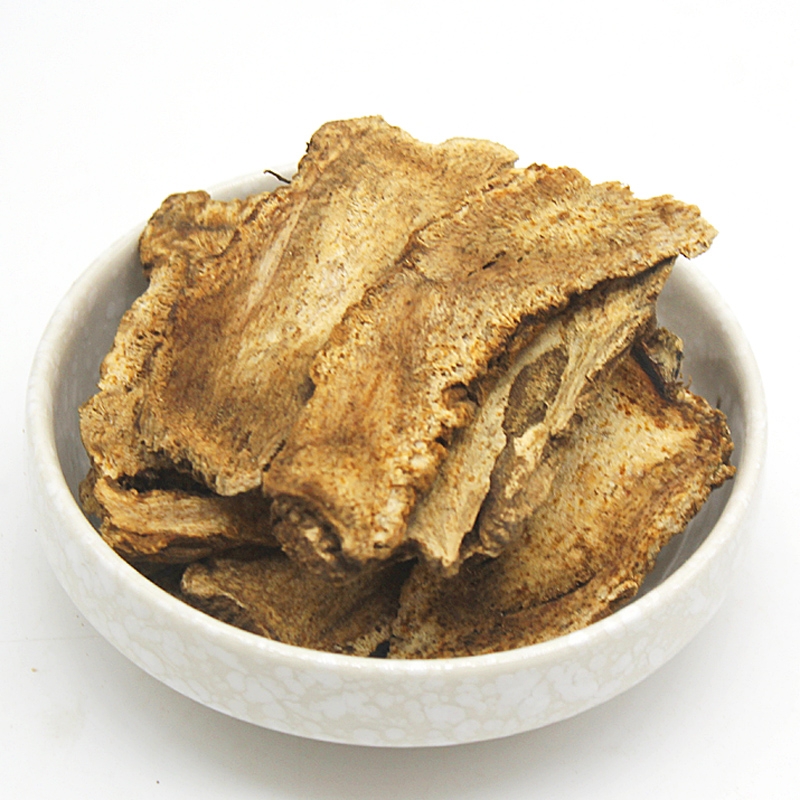Product Description

Short Description:
Chinese name: yun mu xiang
English Name: Aplotaxis auriculata
Latin Name: Aucklandia lappa Decne. [Saussurea lappa Clarke]
Use Part: Roots
Specification: Whole,Cut Slice, Bio Powder,Extract Powder
Main function: Promoting qi to relieve pain, warming the middle and harmonizing the stomach
Application: Medicine,Health Care food,Wine,etc.
Storage: Cool and dry place.
Packing: 1kg/bag,20kg/carton, as per buyers request
PRODUCT DETAIL
Aplotaxis auriculata is the name of traditional Chinese medicine. This product is the root of Aucklandia lappa Decne. [Saussurea lappa Clarke]. From autumn to early spring of the next year, the soil of stems and leaves was removed, and the soil was cut into short sections. The thick ones were longitudinally cut into 2-4 pieces and dried in the sun. The indications are: promoting qi to relieve pain, warming the middle and harmonizing the stomach. It is used for chest and abdominal pain, vomiting, diarrhea, diarrhea, diarrhea, diarrhea, diarrhea, diarrhea, diarrhea, diarrhea, etc. Perennial large herbs, up to about 1 meter high. Taproot stout, cylindrical, slightly woody, bark brown, with sparse lateral roots. Stem with fine longitudinal ribs, sparsely covered with short spiny hairs. Basal leaves long petiole, leaf blade triangular ovate or long triangular. It blooms in summer and autumn, with 2-3 clusters of flower heads on the top of the stem. The flowers are all tubular and dark purple. The achene is strip-shaped, ribbed, with a round of yellow erect feathery hairs at the upper end. The fruit falls off when ripe.

Efficacy
It can relieve pain and warm the stomach. It is used for chest and abdomen pain, vomiting, diarrhea, diarrhea and diarrhea.
Indications
It is used for chest and abdomen pain, vomiting, diarrhea, diarrhea and diarrhea.
Related compatibility
1. For spleen stomach qi stagnation syndrome. This product is good at passing the stagnant Qi of the spleen and stomach. It is an important medicine for promoting qi and relieving pain. It can be used in the same way as tangerine peel, Amomum villosum and sandalwood. For the treatment of spleen deficiency, qi stagnation, abdominal distension, less food and loose stools, it can be used with dangshen, Baizhu and tangerine peel, such as Xiangsha Liujunzi Decoction.
2. Used for diarrhea. It is an important medicine for treating damp heat and diarrhea. It is often combined with Rhizoma Coptidis, such as Xianglian pill. It can be used with betel nut, green skin and rhubarb, such as Muxiang betel nut pill.
3.Used for abdominal pain, hypochondriac pain and gangrene. This product can not only invigorate the spleen, but also dredge the liver and gallbladder, so it can be used to treat abdominal distension pain, hypochondriac pain and jaundice caused by spleen dyskinesia, liver dyskinesia and stagnation of dampness and heat, and qi stagnation. It can be used as the same as Yujin, rhubarb and Yinchen. Modern treatment of cholelithiasis, biliary colic, also has a certain effect.

Usage and dosage
3-9g
Collection and processing
From autumn to early spring of the next year, the soil of stems and leaves was removed, and the soil was cut into short sections. The thick ones were longitudinally cut into 2-4 pieces and dried in the sun.
Processing method
After the roots are transported back, they are cut into short segments of 7-10 cm, and the thick ones are cut into 2-4 pieces longitudinally, and then dried with fire. When baking, the firepower should not be too large, generally controlled at 50 ~ 60 ℃. And pay attention to often turn [www.8u58. Com], put it into basket or sack after it is completely dry, repeatedly push and bump, knock off the coarse skin, sand and fine roots, and it is the finished product.
Storage
Store in a ventilated and dry place to prevent mildew and moth.

